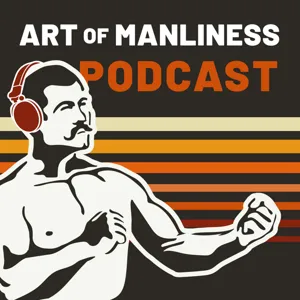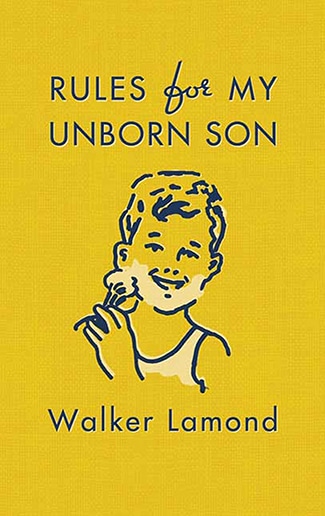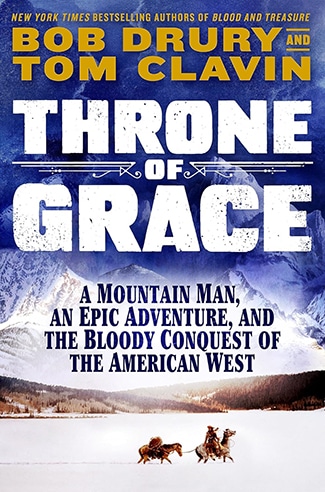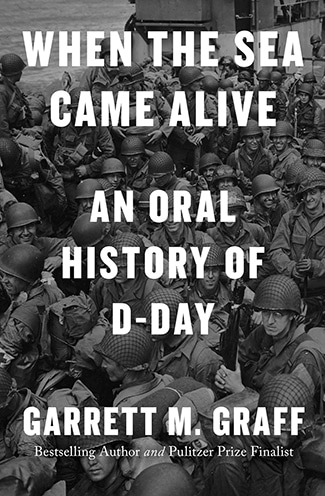Podcast Summary
Exploring the Life and Legacy of John L. Sullivan, America's First Sports Hero: Klein's biography delves into Sullivan's boxing career, personal flaws, and enduring impact on boxing and American masculinity.
Despite being a legendary figure in the history of boxing and American culture, there is a surprising lack of information available about John L. Sullivan's life. This is why Christopher Klein wrote "Strong Boy: The Life and Times of John L. Sullivan, America's First Sports Hero." Sullivan was not only a great boxer, but also a complex and flawed man. The book explores his storied boxing career, his personal flaws, and his eventual triumph over them. It also examines Sullivan's lasting impact on the sport of boxing and masculinity in America. If you're interested in learning more about this intriguing historical figure, check out "Strong Boy." And if you're looking to read more great books, consider using Online Great Books, an online platform that provides physical copies, reading schedules, and online seminars to help you stay on track. Use code AOM at checkout to save 25% on your first three months.
The Rise of John L. Sullivan: America's First Sports Superstar and Irish-American Icon: John L. Sullivan, the first sports superstar and Irish-American icon, intersected with historical movements like mass consumerism, the mass press, and immigration, shaping American culture. Modern researchers can explore these themes using extensive online resources.
John L. Sullivan, a Boston-born Irish-American boxer, was not only an important figure in the rise of modern sports in America but also a trailblazer for celebrity culture. Although boxing might seem like a dying sport today, Sullivan was the first sports superstar and the first Irish-American icon. His life intersected with significant historical movements, including the rise of mass consumerism, the emergence of the mass press, and the immigration wave into America. These themes continue to impact American culture today. Despite not initially setting out to write a boxing book, Sullivan's story provided an excellent opportunity to explore these historical aspects and their relevance to the present day. The availability of extensive research resources, such as old newspapers, on the internet, has made it easier for modern researchers to delve into the past and uncover new insights.
John L. Sullivan brought structure to boxing: John Sullivan's insistence on Marquis of Queensbury rules led to socially acceptable, legal boxing matches with timed rounds, gloves, and a focus on punching.
Before John L. Sullivan, boxing was a brutal and lawless sport with no standardized rules or regulations. Fights often took place in hidden locations, and fighters wore no gloves or protective gear. The London prize ring rules allowed for wrestling moves, eye gouging, and hair pulling, making the matches even more dangerous. Sullivan changed the game by insisting on fighting under the Marquis of Queensbury rules, which introduced timed rounds, gloves, and a focus on punching. This shift made boxing more socially acceptable and legal, leading to larger, more publicized fights and arenas. Sullivan's influence paved the way for modern boxing as we know it today.
Boxing in the Gilded Age: A Legal Gray Area: During the Gilded Age, boxing existed in a legal gray area where fights could be exhibitions but were subject to police intervention for gambling or excessive violence. A formidable fighter named John, known for his speed, power, and unpredictability, stood out with over 200 victories in a decade.
During the Gilded Age, boxing existed in a legal gray area. It was acceptable for exhibitions, but the police could intervene if they believed money was being gambled or if the fights became too violent. John, a formidable fighter with over 200 victories in a decade, stood out for his combination of speed and power. He wasn't formally trained, but he studied the scientific aspects of boxing and believed he knew the optimal place to strike an opponent to knock them out. His powerful right punch, delivered quickly, often overwhelmed opponents. After becoming champion, his intimidating personality gave him a psychological advantage in the ring, allowing him to win fights before they even started. The unpredictability of the fights, both in terms of the outcome between the fighters and the potential intervention of the police, added to the excitement and allure of attending a boxing exhibition during this time.
The National Police Gazette fueled boxing's popularity through scandalous coverage: The National Police Gazette, owned by Richard K. Fox, added boxing to its mix of sex and violence, leading to increased interest and circulation, and a bitter rivalry with champion John L. Sullivan.
The National Police Gazette, a salacious weekly tabloid owned by Richard K. Fox, played a significant role in fueling the popularity of boxing during the rise of mass media. Fox, who saw the growing interest in sports, added boxing coverage to the publication's mix of sex and violence. The rivalry between Fox and boxing champion John L. Sullivan intensified after an encounter at Harry Hill's Gentleman Theater in New York, leading Fox to search far and wide for opponents to challenge Sullivan. Despite their mutual dislike, their animosity proved beneficial for both, driving the interest in boxing and increasing the Gazette's circulation.
From Boxing to Entertainment: John L. Sullivan's Blurred Lines of Celebrity: John L. Sullivan's fame in boxing led him to successful ventures in entertainment, demonstrating the blurred lines of celebrity that exist today. Modern platforms like The Strenuous Life offer skills training, challenges, and community engagement to help individuals excel beyond their comfort zones.
John L. Sullivan, America's first sports superstar, leveraged his fame in boxing to build a successful career in entertainment. Sullivan's fame extended beyond the ring, as he became a celebrity through various ventures, including living statuary performances, vaudeville shows, and theatrical productions. His ability to captivate audiences in different arenas demonstrates the blurred lines of celebrity that exist even today. Additionally, the Strenuous Life, an online platform, offers a modern-day example of this concept by providing skills training, weekly challenges, daily check-ins, and opportunities for community engagement, pushing individuals to excel in various aspects of life beyond their comfort zones.
John L. Sullivan's addiction to alcohol ruined his personal life and career: Boxing legend John L. Sullivan's addiction to alcohol led to numerous health issues, legal troubles, strained relationships, and the squandering of his fortune for two decades before he finally quit in 1905
The struggle with addiction, specifically alcoholism, significantly impacted the personal life and career of boxing legend John L. Sullivan. After winning the championship in 1882, Sullivan's newfound fame led him to develop a severe drinking problem. His addiction caused numerous health issues, run-ins with the law, and strained relationships, including with his wife. Sullivan's drinking even affected his boxing career, with him showing up drunk to a highly anticipated fight at Madison Square Garden. For two decades, Sullivan's addiction took a toll on him, leading to the squandering of his fortune. However, in 1905, Sullivan claimed to have spent half a million dollars on alcohol and decided to quit cold turkey. The discussion highlighted the destructive power of addiction and how it can negatively impact various aspects of one's life.
John L. Sullivan's controversial refusal to fight black boxers: Despite being a boxing champion, John L. Sullivan's refusal to fight black opponents during segregated times is a blemish on his legacy.
John L. Sullivan's biography is a redemption story, despite his past struggles with alcoholism and racism. During his boxing career in the late 1800s, the sport was somewhat integrated, but Sullivan, an Irish American, refused to fight black fighters once he became champion. This is a notable dark episode in his life. In the ring, Sullivan's lack of formal training and reliance on instinct were no match for James J. Corbett, a scientific and intellectual fighter who defeated Sullivan in 1892. Corbett's victory was a combination of his superior skills and Sullivan's potential out-of-shape condition and drunkenness. The racial line in boxing during Sullivan's time was a significant issue, with championship bouts being the only exception to the segregation that was prevalent in other sports.
A clash of boxing styles: Corbett's strategy vs Sullivan's brute strength: Corbett's strategic approach and preparation led him to victory over Sullivan's raw power, emphasizing the importance of strategy and preparation in competition.
The Corbett-Sullivan boxing match was a clash between two vastly different fighting styles. Sullivan, known as the "Boston Strong Boy," relied on brute strength and power, while Corbett, a younger and more thoughtful fighter, approached the fight like a chess match. Corbett's scientific approach ultimately led him to victory, as Sullivan, who was not in peak condition, struggled to keep up. After the defeat, Sullivan shifted his focus to his acting and celebrity career, which had been a fallback option for him for several years. He continued to make appearances in the boxing world, but without the same level of dedication to training. Sullivan remained a famous figure in America for decades, even after losing the championship title, due to his celebrity status and the enduring legacy of his boxing career. The contrasting approaches of these two legendary fighters highlight the importance of strategy and preparation in competition.
James J. Sullivan's journey from boxing to redemption: Irish immigrant James J. Sullivan overcame a failed boxing career to become a successful farmer, adopt children, and advocate for temperance, demonstrating resilience, adaptability, and commitment to family.
The life of boxing champion James J. Sullivan offers lessons on resilience, redemption, and the importance of second chances. Despite a fizzled-out boxing career, Sullivan became a temperance advocate, adopted children, and ran a successful farm. His journey from Ireland during the potato famine to success in America serves as a reminder of the strength and determination of Irish-American families. Sullivan's legacy extends beyond the ring, symbolizing masculinity through his unwavering dedication to life and his ability to make amends for past mistakes. Plutarch's belief in biography as a tool for moral instruction is evident in Sullivan's story, as we can learn from his perseverance, adaptability, and commitment to family.
John L. Sullivan: America's First Sports Hero - Flaws and All: Reflect on John L. Sullivan's life to learn from his mistakes and emulate his determination and zest for life. Check out 'Strong Boy: The Life and Times of John L. Sullivan' for a captivating exploration.
John L. Sullivan, America's first sports hero, lived life to the fullest and left a powerful energy that inspires us to do the same. However, his life was not without its flaws, including racism, mistreatment of his family, and a drinking problem. These aspects serve as instructive moments for us to reflect on and improve in our own lives. Despite these shortcomings, Sullivan's determination and zest for life are qualities we can strive to emulate. The book "Strong Boy: The Life and Times of John L. Sullivan" by Christopher Klein provides a captivating exploration of Sullivan's life and is highly recommended for those interested in learning more about this American icon. Remember to check out the book at Barnes and Noble or Amazon.com. Keep striving for manliness and remember to review and share the Art of Manliness podcast to help us continue spreading the word.













